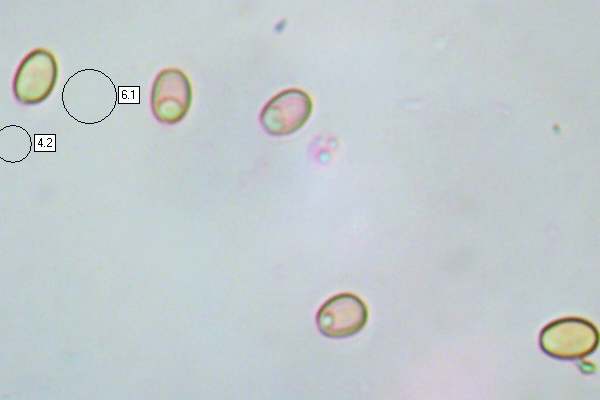Pholiota gummosa (Lasch) Singer - Sticky Scalycap
Phylum: Basidiomycota - Class: Agaricomycetes - Order: Agaricales - Family: Strophariaceae
Distribution - Taxonomic History - Etymology - Identification - Culinary Notes - Reference Sources
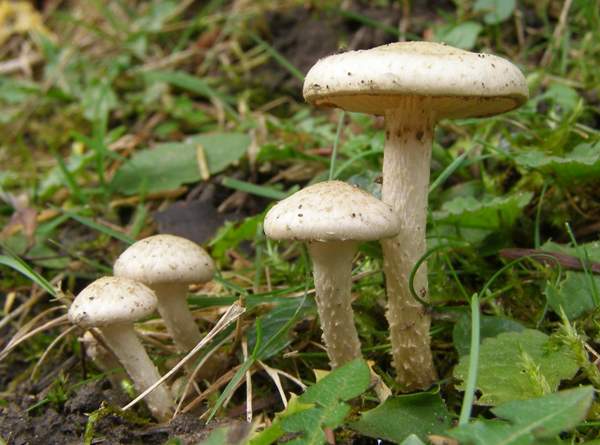
Some of the Pholiota fungi (generally known as the 'scalycaps') - for example Pholiota squarrosa, the Shaggy Scalycap - grow on the lower trunk areas of living trees, and so they can appear to be acting as parasites (although it is most likely that they are consuming wood that is already dead); others are more clearly saprobic as they occur on rotting stumps or on buried rotten wood. The Sticky Scalycap is one of the latter, a saprophytic fungus that displays little or no appetite for fresh food; often where wood has become buried these pallid scalycaps appear to be growing from soil.
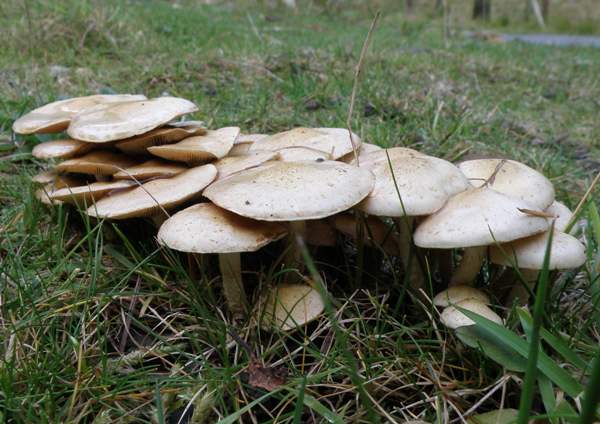
Distribution
An uncommon species in Britain and Ireland, Pholiota gummosa is also found in northern and central mainland Europe as well as in Asia and parts of North America.
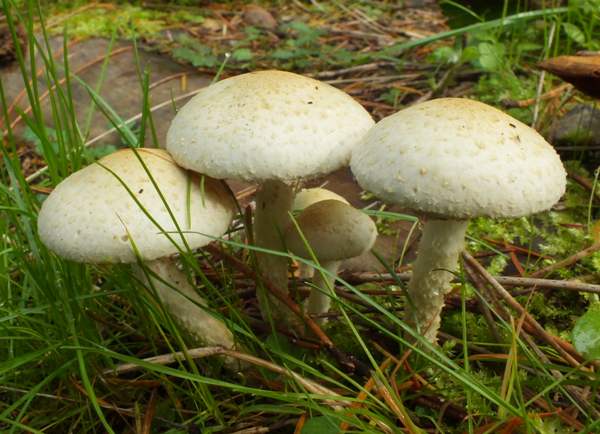
Taxonomic history
This distinctive (for a Pholiota species, that is!) mushroom was described in 1828 by German mycologist Wilhelm Gottfried Lasch (1787 - 1863) who gave it the binomial scientific name Agaricus gummosus. (In the early days of fungal taxonomy most gilled mushrooms were placed in the genus Agaricus, which was later broken up into the many other genera that we use today.)
It was German-born mycologist Rolf Singer who, in 1949, transferred this species to the genus Pholiota, establishing its currently-accepted scientific name as Pholiota gummosa.
Synonyms of Pholiota gummosa include Agaricus gummosus Lasch, Agaricus ochrochlorus Fr., Flammula gummosa (Lasch) P. Kumm., Agaricus cookei Fr., Flammula ochrochlora (Fr.) P. Karst., Dryophila gummosa (Lasch) Quél., Pholiota cookei (Fr.) Sacc., and Pholiota ochrochlora (Fr.) P.D. Orton.
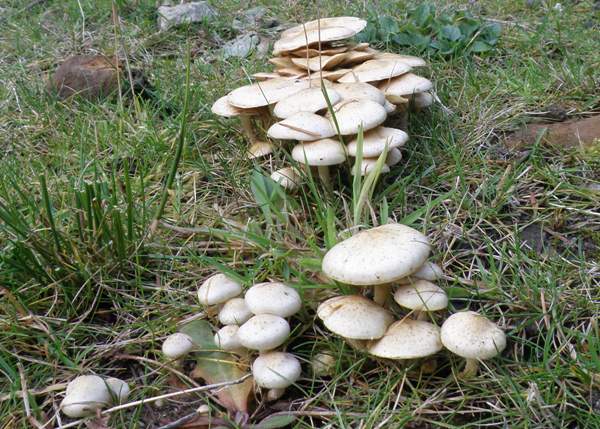
Etymology
The generic name Pholiota means scaly, and the specific epithet gummosa is, as it sounds, a reference to the gummy (sticky but not particularly gooey) nature of the cap surface.
Some of the mushrooms in this genus are very slimy in wet weather, but during dry spells they tend to become tacky and eventually take on a varnished appearance; this makes identification rather more of a challenge, particularly Pholiota gummosa, whose cap scales can wash off in rain.
Identification guide
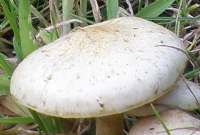 |
Cap2 to 5cm across; pale cream or beige to light ochre with olive tints; convex, becoming flatter and sometimes retaining a small umbo; covered in large dark ochre adpressed scales spaced well apart; the scales tend to fall off or get washed off old caps.. |
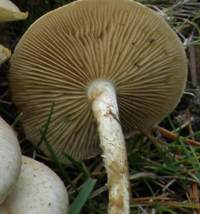 |
GillsAdnate; cream becoming rusty brown. Stem3 to 8cm tall and 0.5 to 1cm diameter; cream or pale beige, flushed brown towards base; covered in fibrous scales below the ring zone. |
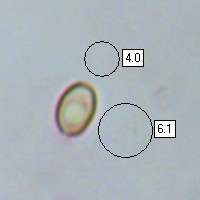 |
SporesEllipsoidal, smooth, 5.5-8 x 3.5-4.5μm with a germ pore. Spore printBrown. |
Odour/taste |
Not distinctive. |
Habitat & Ecological role |
On moss-covered rotting stumps and dead roots. |
Season |
June to October in Britain and Ireland. |
Similar species |
Pholiota squarrosa has much larger scales on its cap, and it grows most often on damaged areas of the lower trunks of living trees. |
Culinary Notes
Like most other fungi in the family Strophariaceae, despite their attractive appearance Sticky Scalycaps and indeed all other scalycaps (Pholiota species) are definitely not edible mushrooms, although in the past some members of this genus were considered to be so.
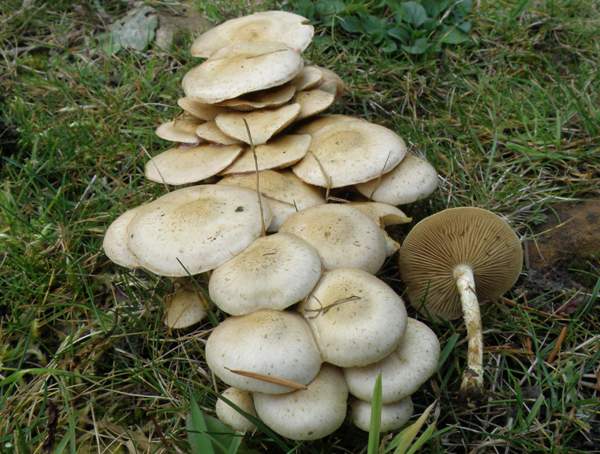
Reference Sources
Fascinated by Fungi, 2nd Edition, Pat O'Reilly 2016, reprinted by Coch-y-bonddu Books in 2022.
British Mycological Society (2010). English Names for Fungi
Funga Nordica, Henning Knudsen and Jan Vesterholt, 2008.
Dictionary of the Fungi; Paul M. Kirk, Paul F. Cannon, David W. Minter and J. A. Stalpers; CABI, 2008
Taxonomic history and synonym information on these pages is drawn from many sources but in particular from the British Mycological Society's GB Checklist of Fungi.
Fascinated by Fungi. Back by popular demand, Pat O'Reilly's best-selling 450-page hardback book is available now. The latest second edition was republished with a sparkling new cover design in September 2022 by Coch-y-Bonddu Books. Full details and copies are available from the publisher's online bookshop...
